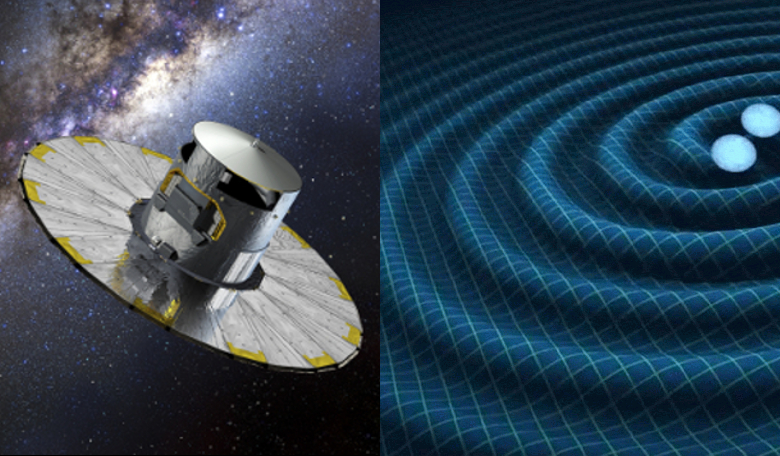The ground-breaking discovery of gravitational waves last year initiated a new era in this field of astronomy and now researchers are looking at new and novel ways in which to find these once elusive ripples in space-time.
Recently, both LIGO and LISA have hit the news in their search for a wave predicted by Einstein over 100 years ago. The ground-based Laser Interferometer Gravitational-Wave Observatory (LIGO) was responsible for the detection of GW150914, and subsequent GW events, which marked not only the first ever detection of a gravitational wave (GW) but also the first observation of a binary black hole merger.
LISA on the other hand, has just been given the go ahead by ESA after the successful completion of its pathfinder mission. LISA, once it is launched in 2034, will operate in the low frequency range and is looking for objects in much wider orbits and ones that are potentially much heavier than those that LIGO is searching for.
So while LIGO continues to operate and the community wait for LISA to be built, is there anything that can be done in the mean time to search for gravitational waves?
One team based in the UK thinks so. Located at Cambridge University, the Cavendish Laboratory and the Kavli Institute for Cosmology, the team have suggested that astrometric data from ESA’s space-astrometry mission Gaia, could help fill the gap in the search for more GWs.
Gaia is an ambitious mission to chart a three-dimensional map of our Galaxy, by measuring the positions and distances of stars in the Milky Way with unprecedented precision. So far, so good. But what does this have to do with gravitational waves you might ask…?
Well, as GWs traverse through space they cause the apparent position of distant stars to oscillate I.e. move back and forth with a characteristic pattern on the sky. Gaia, which has been operating since 2014, will make around 80 observations per source in a five year time frame, thus giving many measurements of a stars position over a set time.
The idea to look for GWs via astrometric deflections was first suggested in 1990 by a different team of scientists, however missions such as Gaia were not available at the time to test such an idea. And there is one downside to a search such as this – the vast amount of data a mission like Gaia produces. As Gaia is aiming to monitor one billion stars, the data generated will eventually equate to around 200 terabytes (TB) of usable uncompressed data.
However the team, whose lead author on the recent research is Christopher J. Moore, have demonstrated that mock data sets constructed using the first Gaia data release can be greatly compressed by a factor of more than 10^6. After compression, the team artificially injected GWs into the data to search for them.
The team found that by using this method, Gaia’s peak sensitivity for finding GWs will occur at the galactic poles. As the final Gaia data release is fast approaching, the team’s techniques could be used for complementary GW searches utilising data that has already been collected for another high-profile mission.
Perhaps data from other missions such as the PLATO satellite, which is expected to obtain stellar photometric light curves for 1,000,000 stars, could also be used in the same way to search for GWs.
More information on this research can be found here.











